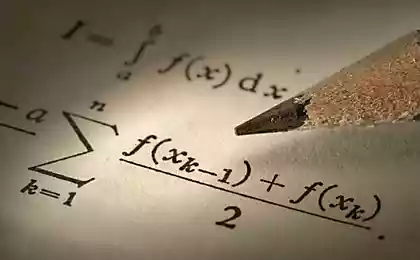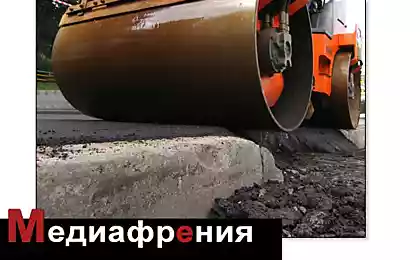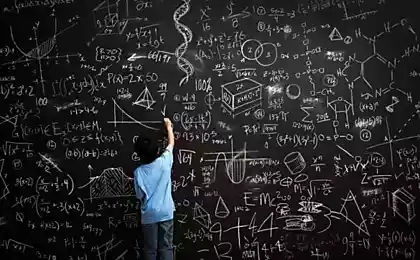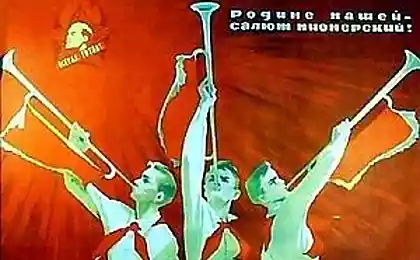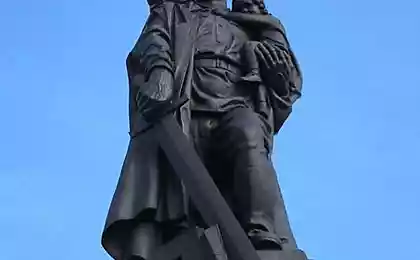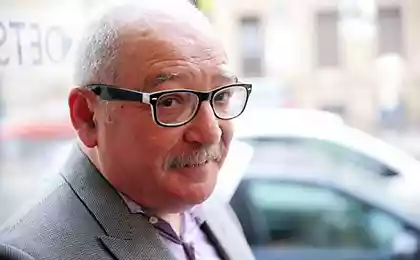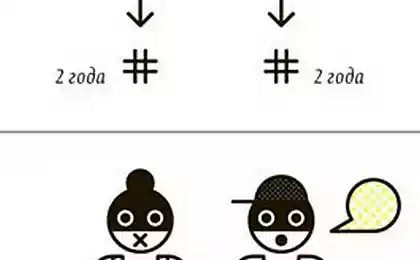615
Why Israel learn from old Soviet textbooks?
In the early 30-ies of the last century the world's best Math books "obsolete" "pre-revolutionary" Kiselyov returned socialist children, instantly raised the quality of knowledge and improve their psyche. And only in the 70 years the Jews managed to change "excellent" to "poor".

Help:
It is considered that the famous reform of mathematics 1970-1978. ("reform 70") devised and implemented a academician. Kolmogorov. This is a misconception. A. N. Kolmogorov was appointed head of the reform-70 is already at the last stage of its preparation in 1967, three years before. His contribution is exaggerated — he merely elaborated on the famous reformist installation (set-theoretic content, axioms, generalizing concepts, rigor, etc.) of those years. It was intended role to become "extreme".
Forgotten, that is all preparatory to the reform work led for more than 20 years, the informal group of associates, formed in the 1930s, in 1950-1960s strengthened and expanded. Led the team in the 1950s was given the academician A. I. Markushevich, faithfully, aggressively and effectively carry out the program outlined in the 1930s by mathematicians: L. G. Shnirelman, L. A. Lusternik, G M. Fichtengolz, P. S. Alexandrov, N. F. By chetveruhin, Sobolev, A. Y. by Chinchinim etc. [2. S. 55-84]. As mathematics is very capable, they did not know school had no experience teaching children, did not know child psychology, and therefore the problem of increasing the "level" of mathematics education seemed to be simple, and the methods of teaching, which they offered, was never in doubt. In addition, they were arrogant and contemptuous of the warnings of experienced teachers.
"I would return to Kiselev". Academician V. I. Arnold
The call to "return to Kiselev" is heard for 30 years. It arose immediately after the reform-70 expelled from school great books and started the process of progressive degradation of education. Why not cease this call?
Someone explains this "nostalgia" [1, p. 5]. The inappropriateness of this explanation is obvious, if you remember that first one back in 1980, on the heels of the reforms called for a return to the experience and textbooks of the Russian school, was academician L. S. Pontryagin. Professionally analyzing new textbooks, he is convincing, examples to explain, why it should be done [2, p. 99-112].
Because all the new textbooks focused on the Science, or rather, pseudo-science and completely ignore the Student, the psychology of perception, which could account for the old textbooks. It is "high theoretical level" of modern textbooks is the root cause of the catastrophic decline of quality of learning and knowledge. The reason this works for more than thirty years, not allowing though as-that to rectify the situation.
Today, learn mathematics, about 20% of the students (geometry — 1%) [3, p. 14], [4, p. 63]. In 40 years (after the war!) fully learned all the branches of mathematics 80% of students who "Kiselev" [3, p. 14]. This is not an argument for his return to children?
In the 80-ies of the appeal was ignored by the Ministry (M. A. Prokofiev), under the pretext that "it is necessary to develop new textbooks." Today we see that 40 years of "improving" bad books have not generated good. And could not produce.
A good tutorial is not "written" in one or two years for the Ministry or for competition. He will not be "written" even in ten years. He produced a skillful teacher-practitioner with the students during the whole teaching of life (and not a mathematics Professor or an academician at the Desk).
Pedagogical talent is rare, much less actually mathematical (good mathematicians darkness, authors of good textbooks — units). The main feature of teaching talent — the ability of empathy with the student, which allows us to correctly understand his thoughts and reasons for difficulties. Only when this subjective condition may be found to be true methodical decisions. And they need to be tested, adjusted and brought to a practical result of long experience, careful, meticulous observation of numerous errors of students, thoughtful analysis.
So for more than forty years (the first edition in 1884) created their wonderful, unique textbook, the real teacher of the Voronezh College A. P. Kiselev. His highest goal was the understanding of the subject by students. And he knew how that goal is achieved. Therefore, it was easy to learn from his books.
Its pedagogical principles A. P. Kiselev expressed very succinctly: "the Author... primarily aims to achieve three qualities of a good textbook:
exactly (!) in the formulation and establishment of concepts
simplicity (!) in reasoning and
compactness (!) in the presentation" [5, p. 3].
Deep pedagogical significance of these words somehow lost their simplicity. But these simple words are worth thousands of modern dissertations. Let's think about it.
Modern writers, following the mandate of A. N. Kolmogorov, aspire "to a more strict (why? — I. K.) from a logical side to build a school course of mathematics" [6, p. 98]. Kiselev cared not about "rigor" and exactly (!) formulations, which allows for a proper understanding, adequate science. Accuracy is the conformity of sense. The notorious formal "austerity" leads to a distancing from the meaning and, eventually, completely destroy it.
Kiselev not even used the words "logic" and is not talking about "logical proofs" seems to be an inherent characteristic of mathematics, and about "simple reasoning". In these "arguments," of course, there is logic, but it occupies a subordinate position and serves a pedagogical purpose — clarity and credibility (!) reasoning for the student (not the academic).
Finally, the compactness. Please note — not brevity and conciseness! How subtly felt Andrei Petrovich hidden meaning of the words! The short involves reducing, the throwing of something, can be substantial. Compactness is the compression lossless. Cut off only unnecessary — distractions littering that prevent focusing on the senses. The purpose of the short is to reduce the volume. The goal of compactness — purity of essence! This compliment to the Kiselev voiced at the conference "Mathematics and society" (Dubna) in 2000: "What purity!"
Voronezh is a wonderful mathematician Yu. V. Pokorny, "suffering school", found that the methodological architecture textbooks Kiseleva most coherent psycho-genetic laws and the development of young forms of intelligence (piaget-Vygotsky), ascending to Aristotelio "ladder forms the soul." "There (in the tutorial geometry of Kiselev — I. K.), if you remember, initially the presentation focuses on sensory-motor thinking (apply, since the segments or angles are equal, the other end or other side match, etc.).
Then worked out schemes of action that provide the initial (Vygotsky and piaget) geometric intuition combinations lead to the possibility of conjecture (the insight, the Aha-experience). With this increased argument in the form of syllogisms. Axioms appear only at the end of the plane, after which a more rigorous deductive reasoning. No wonder kogtetochke times the geometry by Kiselev instilled in students the skills of formal logical reasoning. And did it quite successfully" [7, pp. 81-82].
That's where another secret miraculous pedagogical powers Kiseleva! He is not only psychologically correctly delivers each topic, but builds your textbooks (from Junior to senior) and selects methods according to age forms of thinking and understanding abilities of children, slowly and thoroughly developing them. The highest level of pedagogical thinking that are unavailable to modern certified specialists and successful authors of the textbooks.
And now I want to share one personal experience. Teaching in the technical colleges probability theory, I always felt uncomfortable to explain to students the concepts and formulas of combinatorics. The students did not understand the insights, confused in choosing formulas, combinations, placements, and permutations. Could not clarify, until the thought came to seek help to Kiselyov, I remembered that in high school, these questions did not cause any difficulties and was even interesting. Now this section is ejected from the secondary school in this way, the MoE has tried to solve their own created problem of overload.
So, after reading the summary Kiseleva, I was amazed, when he found a solution to a specific methodological problem that has long failed me. Arose disturbing the connection between the shower — it turned out that A. P. Kiselev knew about my problem, thought about it and decided a long time ago! The solution was a moderate specificity and psychologically correct phrasing, when they not only correctly reflect and take into account the thought process of the student and submit it. And we had to suffer considerably in the long-term solution to the methodological challenges to assess art A. P. Kiselev. Very subtle, very fine and rare pedagogical skill. Rare! Modern scientists educators and authors of commercial textbooks ought to study textbooks, school teachers, A. P. Kiselev.
A. M. Abramov (one of the reformers-70, — he, by his own admission [8, p. 13], and participated in writing the "Geometry" of Kolmogorov) frankly admits that only after years of study and analysis of textbooks Kiselev has become a bit to understand the hidden teaching "secrets" of these books and "profound pedagogical culture" of their author, textbooks, which "national treasure" (!) Russia [8, p. 12-13].
And not only in Russia — in schools in Israel all this time without complexes using textbooks Kiselyov. This fact confirms the Director of the Pushkin House academician. Rays: "Now more and more experts say that the Scherba textbook on the Russian language still covers all the latest tutorials, and I think while we (?) reckless (?) indulged in mathematical experiments, smart Israelis taught algebra in our textbook Kiselev." [9, p. 75].
We are all the time invented obstacles. The main argument that"Kiselev is outdated". But what does that mean?
In science, the term "obsolete" applies to theories, the fallacy or incompleteness which has to their further development. What "obsolete" Kiselyov? The Pythagorean theorem or something out of the content of its textbooks? Maybe in the era of high-speed calculators obsolete action rules with numbers, which do not know many modern school graduates (don't know how add fractions)?
Our best modern mathematician, academician V. I. Arnol'd somehow not Kiselyov considers "obsolete". Obviously, in his books nothing is not true, not scientific in the modern sense. But is that the highest pedagogical and methodological culture and integrity that have been lost to our pedagogy and to which we never reach. Never!
The term "outdated" is just a sly technique, characteristic of the modernizers of all time. Welcome, subliminal. Nothing truly valuable is not obsolete — it is forever. And it will not be able to "throw off the ship of modernity" as it was not possible to reset "legacy" Pushkin Rapovski modernizers of Russian culture in the 20-ies. Never gets old, will not be forgotten and Kiselev.
Another argument: return is not possible due to program changes and merge trigonometry with geometry [10, p. 5]. The argument isn't a program, it is possible to change, and trigonometry to divide geometry and, most importantly, algebra. Moreover, the specified connection (as the connection of algebra with the analysis) is another blunder of the reformers-70, it violates the fundamental methodological rule — difficult to disconnect and not connect.
Classical training "Kiselyov" involves the study of trigonometric functions and their transformations unit as a separate discipline in X class, and at the end of the application acquired to the solution of triangles and to solving stereometric problems. The last theme was great methodically worked through a sequence of typical tasks. Stereometric problem "in geometry with the use of trigonometry" was a mandatory element of the final examinations for matriculation. Students coped well with these challenges. And today? Students of MSU can't solve a simple planimetric task!
Finally, one more terrible argument, — "I have errors" (prof. X. Pink). I wonder what? Turns out — missing logical steps in proofs.
But it's not a mistake, it is a conscious, educationally justifiable absences, for easier understanding. This is a classic methodological principle of Russian pedagogy: "one should not aim directly to the strictly logical justification of one or another mathematical fact. For school is acceptable "logical jump through intuition", which ensures the necessary availability of educational material" (from the speech of a prominent Methodist D. Mordecai-Bolhovskogo on the Second all-Russian Congress of teachers of mathematics in 1913).
Modernizers-70 was replaced by the principle antipodagriceski pseudo-scientific principle of "strict" statement. He destroyed the technique, gave rise to misunderstanding and aversion of students towards mathematics. Give an example of pedagogical deformities, which is the principle.
Remembers old Novocherkassk teacher V. K. Kovalenko. "August 25, 1977 there was a meeting of the Umsa, MP of the USSR, where academician A. N. Kolmogorov analysed the textbooks of mathematics from 4th to 10th classes and review of each textbook ended with the phrase: "After some adjustments it will be a great tutorial, and if you understand the question, you approve the textbook". Present at the meeting, the teacher from Kazan said regretfully sitting next to: "wow, a genius in mathematics — the layman in education. He doesn't understand what it is not textbooks, and freaks, and he praises them“.
The debate was organised by the Moscow teacher Weitzman: "I'll read from the actual geometry textbook definition of a polyhedron". Kolmogorov, after hearing the definition, said, "right, all Right!". The teacher replied: "In the scientific sense all right, and in teaching blatant ignorance. This definition is in bold, it means that compulsory learning, and is half of the page. So is the essence of school mathematics is to millions of schoolchildren crammed the definition in half a page of the textbook? In that time, Kiselyov is the definition given for a convex polyhedron, and takes less than two lines. It scientifically and pedagogically competent.“
The same was said in their speeches and other teachers. Summing up, A. N. Kolmogorov said: "unfortunately, as before, continued unnecessary criticism instead of a business conversation. You did not support me. But it doesn't matter, because I agreed with the Minister Prokofiev and he fully supports me.“This fact is stated B. K. Kovalenko in an official letter to the FES from 25.09.1994 G.
Another interesting example of profanation of the pedagogy specialists-mathematicians. Example, suddenly revealing one truly "secret" Kiselevsky books. Ten years ago, I attended the lecture of our math major. The lecture was devoted to the school math. At the end asked the lecturer a question — as it relates to textbooks Kiselev? Answer: "Tutorials are good, but they are out of date". The answer is trivial, but it is interesting the continuation, as an example, the lecturer drew because drawing the sign of parallelism of two planes. In this drawing the plane abruptly swerved to intersect. And I thought, "Really, what a ridiculous drawing! Drawn what can not be!“ And distinctly remembered the true drawing, and even its position on the page (bottom-left) in the textbook, in which he studied almost forty years ago. And felt associated with the drawing a feeling of muscle tension, like trying to forcibly connect the two disjoint planes. She is there-from memory a statement: "If two intersecting straight lines "in one plane parallel to the -..", followed by all short proof "by contradiction".
I was shocked. It turns out that Kiselev captured in my mind this meaningful mathematical fact forever (!).
Finally, an example of consummate art Kiseleva relatively modern authors. Holding the textbook for 9th grade "Algebra-9" published in 1990. Author — J. N. Makarychev and K0, and by the way, textbooks Makarycheva and Vilenkin, cited as examples of "poor, illiterate... done" L. S. Pontryagin [2, p. 106]. First page: §1. "Function. The scope and range of functions."
The header contains the purpose is to show the student three interrelated mathematical concepts. How can we solve this educational problem? First, given a formal definition, then many motley abstract examples, and then a lot of chaotic exercise that has no rational pedagogical purpose. There is overloading and abstraction. The statement is seven pages. The form of presentation, starting with nowhere who took "rigorous" definitions and then illustrate them with examples, screen for the modern scientific monographs and articles.
Compare the presentation of the A. P. Kiselev (Algebra, part 2. M.: Moscow. 1957). The technique is opposite. The theme starts with two examples — household and geometric, these examples are familiar to the student. Examples are as that naturally lead to the concepts of variable, argument, and function. After this are given the definition and 4 examples with very brief explanations, their goal is to test the understanding of the pupil, give him confidence. Recent examples too close to the student, they are taken from geometry and physics school. The presentation is two (!) page. No overloading, no abstraction! An example of a "psychological narrative," according to F. Klein.
A meaningful comparison of volumes of books. Makarycheva textbook for class 9 contains 223 pages (excluding historical information and answers). Tutorial Kiselyov contains 224 pages, but is designed for three years of study for grades 8-10. The volume increased three times!
Today, another of the reformers seek to reduce overload and to "humanize" education, supposedly caring about the health of schoolchildren. Words, words... In fact, instead of trying to make math understandable, they destroy its main content. First, in the 70s. "raised the theoretical level," undermining the psyche of children, and now "lower" the level of primitive technique of throwing "junk" topics (logarithms, geometry, etc.) and reduction of teaching hours [11, p. 39-44].
Authentic humanization it would be a return to Kiselev. He'd do the math again kid-friendly favorite. And there is precedent in our history: in the early 30-ies of the last century "old" "pre-revolutionary" Kiselev returned "socialist" children, instantly raised the quality of knowledge and improve their psyche. And, perhaps, helped to win the great war.
The main obstacle is not the case, and the clans who control the Federal set of textbooks and profitably propagate their training products. These figures "national education" as the recent Chairman of the FES G. V. Dorofeev, who put his name is probably on hundreds of educational books published by "the snow leopard", L. G. Peterson [12, p. 102-106], I. Roginska, E. P., Benenson, A. V. Savkin (see the website "www.shevkin.ru"), etc, etc, Rate, for example, modern pedagogical masterpiece, aimed at the "development" of third-graders:
"The problem 329. To determine the values of the three complex expressions, a student performed the following actions: 320-3, 318+507, 169-3, 248:4, 256+248, 231-3, 960-295, 62+169, 504:4, 256+62, 126+169, 256+693. 1. Do all of these steps. 2. Restore the complicated expression if one of the actions found in two of them (??). 3. Offer continued job." [13].
But Kiselyov will be back! In different cities there are already teachers who are working "Kiselyov". Starting to publish his books. Return invisibly is coming! And I remember the words: "long live the sun! So the darkness will disappear!"
Literature
1. Mathematics (a Supplement to the newspaper "First of September"). 1999, No. 11.
2. Pontryagin L. S. About mathematics and its teaching]. 1980, No. 14.
3. Teachers ' newspaper. 2001, No. 44.
4. Mathematics in the school. 2002, №2.
5. Orlovskiy University. 2002, №7.
6. On the upgrade paths school mathematics. M.; Education, 1978.
7. Humble V. the Humiliation of mathematics. Voronezh, 2006.
8. Teachers ' newspaper. 1994, No. 6.
9. Mathematics in the school. 2003, №2.
10. Mathematics in the school. 2000, No. 1.
11. The education which we can lose. M. 2002, p. 39-44.
Article printed in the journal "Mathematical education"
Kostenko I. P.
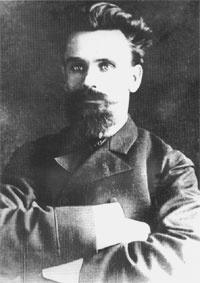
In 1938 Andrei Petrovich Kiselev said:
I am happy that I lived to see the days when mathematics became the property of the broadest masses. Is it possible to compare the meager circulation of pre-revolutionary times with the current. And no wonder. For now, learning the whole country. I'm glad that old age can be useful to our great Homeland, Morgulis and V. A. Reeds "Legislator of the school of mathematics" // "Science and life" p. 122
Tutorials:
"Systematic arithmetic course for secondary schools" (1884)[12];
"Elementary algebra" (1888)[13];
"Elementary geometry" (1892-1893)[14];
"Additional articles algebra" course 7th grade real schools (1893);
"Quick arithmetic for urban schools" (1895);
"A brief algebra for girls 'schools, and seminaries" (1896);
"Elementary physics for secondary schools with many exercises and tasks" (1902; passed 13 publications)[5];
"Physics" (two pieces) (1908);
"The beginning of the differential and integral calculus" (1908);
"Elementary teaching about derivatives for the 7th grade real schools" (1911);
"A graphic image of some of the functions considered in elementary algebra," (1911);
"On such matters of elementary geometry, which is commonly solved using the limits" (1916);
"Quick algebra" (1917);
"Quick arithmetic for city County schools" (1918);
"The irrational numbers considered as non-periodic infinite fractions" (1923);
"Elements of algebra and analysis" (CC. 1-2, 1930-1931). published
P. S. And remember, just changing your mind - together we change the world! ©
Source: www.kramola.info/vesti/protivostojanie/pochemu-v-izraile-uchatsja-po-starym-sovetskim-uchebnikam

Help:
It is considered that the famous reform of mathematics 1970-1978. ("reform 70") devised and implemented a academician. Kolmogorov. This is a misconception. A. N. Kolmogorov was appointed head of the reform-70 is already at the last stage of its preparation in 1967, three years before. His contribution is exaggerated — he merely elaborated on the famous reformist installation (set-theoretic content, axioms, generalizing concepts, rigor, etc.) of those years. It was intended role to become "extreme".
Forgotten, that is all preparatory to the reform work led for more than 20 years, the informal group of associates, formed in the 1930s, in 1950-1960s strengthened and expanded. Led the team in the 1950s was given the academician A. I. Markushevich, faithfully, aggressively and effectively carry out the program outlined in the 1930s by mathematicians: L. G. Shnirelman, L. A. Lusternik, G M. Fichtengolz, P. S. Alexandrov, N. F. By chetveruhin, Sobolev, A. Y. by Chinchinim etc. [2. S. 55-84]. As mathematics is very capable, they did not know school had no experience teaching children, did not know child psychology, and therefore the problem of increasing the "level" of mathematics education seemed to be simple, and the methods of teaching, which they offered, was never in doubt. In addition, they were arrogant and contemptuous of the warnings of experienced teachers.
"I would return to Kiselev". Academician V. I. Arnold
The call to "return to Kiselev" is heard for 30 years. It arose immediately after the reform-70 expelled from school great books and started the process of progressive degradation of education. Why not cease this call?
Someone explains this "nostalgia" [1, p. 5]. The inappropriateness of this explanation is obvious, if you remember that first one back in 1980, on the heels of the reforms called for a return to the experience and textbooks of the Russian school, was academician L. S. Pontryagin. Professionally analyzing new textbooks, he is convincing, examples to explain, why it should be done [2, p. 99-112].
Because all the new textbooks focused on the Science, or rather, pseudo-science and completely ignore the Student, the psychology of perception, which could account for the old textbooks. It is "high theoretical level" of modern textbooks is the root cause of the catastrophic decline of quality of learning and knowledge. The reason this works for more than thirty years, not allowing though as-that to rectify the situation.
Today, learn mathematics, about 20% of the students (geometry — 1%) [3, p. 14], [4, p. 63]. In 40 years (after the war!) fully learned all the branches of mathematics 80% of students who "Kiselev" [3, p. 14]. This is not an argument for his return to children?
In the 80-ies of the appeal was ignored by the Ministry (M. A. Prokofiev), under the pretext that "it is necessary to develop new textbooks." Today we see that 40 years of "improving" bad books have not generated good. And could not produce.
A good tutorial is not "written" in one or two years for the Ministry or for competition. He will not be "written" even in ten years. He produced a skillful teacher-practitioner with the students during the whole teaching of life (and not a mathematics Professor or an academician at the Desk).
Pedagogical talent is rare, much less actually mathematical (good mathematicians darkness, authors of good textbooks — units). The main feature of teaching talent — the ability of empathy with the student, which allows us to correctly understand his thoughts and reasons for difficulties. Only when this subjective condition may be found to be true methodical decisions. And they need to be tested, adjusted and brought to a practical result of long experience, careful, meticulous observation of numerous errors of students, thoughtful analysis.
So for more than forty years (the first edition in 1884) created their wonderful, unique textbook, the real teacher of the Voronezh College A. P. Kiselev. His highest goal was the understanding of the subject by students. And he knew how that goal is achieved. Therefore, it was easy to learn from his books.
Its pedagogical principles A. P. Kiselev expressed very succinctly: "the Author... primarily aims to achieve three qualities of a good textbook:
exactly (!) in the formulation and establishment of concepts
simplicity (!) in reasoning and
compactness (!) in the presentation" [5, p. 3].
Deep pedagogical significance of these words somehow lost their simplicity. But these simple words are worth thousands of modern dissertations. Let's think about it.
Modern writers, following the mandate of A. N. Kolmogorov, aspire "to a more strict (why? — I. K.) from a logical side to build a school course of mathematics" [6, p. 98]. Kiselev cared not about "rigor" and exactly (!) formulations, which allows for a proper understanding, adequate science. Accuracy is the conformity of sense. The notorious formal "austerity" leads to a distancing from the meaning and, eventually, completely destroy it.
Kiselev not even used the words "logic" and is not talking about "logical proofs" seems to be an inherent characteristic of mathematics, and about "simple reasoning". In these "arguments," of course, there is logic, but it occupies a subordinate position and serves a pedagogical purpose — clarity and credibility (!) reasoning for the student (not the academic).
Finally, the compactness. Please note — not brevity and conciseness! How subtly felt Andrei Petrovich hidden meaning of the words! The short involves reducing, the throwing of something, can be substantial. Compactness is the compression lossless. Cut off only unnecessary — distractions littering that prevent focusing on the senses. The purpose of the short is to reduce the volume. The goal of compactness — purity of essence! This compliment to the Kiselev voiced at the conference "Mathematics and society" (Dubna) in 2000: "What purity!"
Voronezh is a wonderful mathematician Yu. V. Pokorny, "suffering school", found that the methodological architecture textbooks Kiseleva most coherent psycho-genetic laws and the development of young forms of intelligence (piaget-Vygotsky), ascending to Aristotelio "ladder forms the soul." "There (in the tutorial geometry of Kiselev — I. K.), if you remember, initially the presentation focuses on sensory-motor thinking (apply, since the segments or angles are equal, the other end or other side match, etc.).
Then worked out schemes of action that provide the initial (Vygotsky and piaget) geometric intuition combinations lead to the possibility of conjecture (the insight, the Aha-experience). With this increased argument in the form of syllogisms. Axioms appear only at the end of the plane, after which a more rigorous deductive reasoning. No wonder kogtetochke times the geometry by Kiselev instilled in students the skills of formal logical reasoning. And did it quite successfully" [7, pp. 81-82].
That's where another secret miraculous pedagogical powers Kiseleva! He is not only psychologically correctly delivers each topic, but builds your textbooks (from Junior to senior) and selects methods according to age forms of thinking and understanding abilities of children, slowly and thoroughly developing them. The highest level of pedagogical thinking that are unavailable to modern certified specialists and successful authors of the textbooks.
And now I want to share one personal experience. Teaching in the technical colleges probability theory, I always felt uncomfortable to explain to students the concepts and formulas of combinatorics. The students did not understand the insights, confused in choosing formulas, combinations, placements, and permutations. Could not clarify, until the thought came to seek help to Kiselyov, I remembered that in high school, these questions did not cause any difficulties and was even interesting. Now this section is ejected from the secondary school in this way, the MoE has tried to solve their own created problem of overload.
So, after reading the summary Kiseleva, I was amazed, when he found a solution to a specific methodological problem that has long failed me. Arose disturbing the connection between the shower — it turned out that A. P. Kiselev knew about my problem, thought about it and decided a long time ago! The solution was a moderate specificity and psychologically correct phrasing, when they not only correctly reflect and take into account the thought process of the student and submit it. And we had to suffer considerably in the long-term solution to the methodological challenges to assess art A. P. Kiselev. Very subtle, very fine and rare pedagogical skill. Rare! Modern scientists educators and authors of commercial textbooks ought to study textbooks, school teachers, A. P. Kiselev.
A. M. Abramov (one of the reformers-70, — he, by his own admission [8, p. 13], and participated in writing the "Geometry" of Kolmogorov) frankly admits that only after years of study and analysis of textbooks Kiselev has become a bit to understand the hidden teaching "secrets" of these books and "profound pedagogical culture" of their author, textbooks, which "national treasure" (!) Russia [8, p. 12-13].
And not only in Russia — in schools in Israel all this time without complexes using textbooks Kiselyov. This fact confirms the Director of the Pushkin House academician. Rays: "Now more and more experts say that the Scherba textbook on the Russian language still covers all the latest tutorials, and I think while we (?) reckless (?) indulged in mathematical experiments, smart Israelis taught algebra in our textbook Kiselev." [9, p. 75].
We are all the time invented obstacles. The main argument that"Kiselev is outdated". But what does that mean?
In science, the term "obsolete" applies to theories, the fallacy or incompleteness which has to their further development. What "obsolete" Kiselyov? The Pythagorean theorem or something out of the content of its textbooks? Maybe in the era of high-speed calculators obsolete action rules with numbers, which do not know many modern school graduates (don't know how add fractions)?
Our best modern mathematician, academician V. I. Arnol'd somehow not Kiselyov considers "obsolete". Obviously, in his books nothing is not true, not scientific in the modern sense. But is that the highest pedagogical and methodological culture and integrity that have been lost to our pedagogy and to which we never reach. Never!
The term "outdated" is just a sly technique, characteristic of the modernizers of all time. Welcome, subliminal. Nothing truly valuable is not obsolete — it is forever. And it will not be able to "throw off the ship of modernity" as it was not possible to reset "legacy" Pushkin Rapovski modernizers of Russian culture in the 20-ies. Never gets old, will not be forgotten and Kiselev.
Another argument: return is not possible due to program changes and merge trigonometry with geometry [10, p. 5]. The argument isn't a program, it is possible to change, and trigonometry to divide geometry and, most importantly, algebra. Moreover, the specified connection (as the connection of algebra with the analysis) is another blunder of the reformers-70, it violates the fundamental methodological rule — difficult to disconnect and not connect.
Classical training "Kiselyov" involves the study of trigonometric functions and their transformations unit as a separate discipline in X class, and at the end of the application acquired to the solution of triangles and to solving stereometric problems. The last theme was great methodically worked through a sequence of typical tasks. Stereometric problem "in geometry with the use of trigonometry" was a mandatory element of the final examinations for matriculation. Students coped well with these challenges. And today? Students of MSU can't solve a simple planimetric task!
Finally, one more terrible argument, — "I have errors" (prof. X. Pink). I wonder what? Turns out — missing logical steps in proofs.
But it's not a mistake, it is a conscious, educationally justifiable absences, for easier understanding. This is a classic methodological principle of Russian pedagogy: "one should not aim directly to the strictly logical justification of one or another mathematical fact. For school is acceptable "logical jump through intuition", which ensures the necessary availability of educational material" (from the speech of a prominent Methodist D. Mordecai-Bolhovskogo on the Second all-Russian Congress of teachers of mathematics in 1913).
Modernizers-70 was replaced by the principle antipodagriceski pseudo-scientific principle of "strict" statement. He destroyed the technique, gave rise to misunderstanding and aversion of students towards mathematics. Give an example of pedagogical deformities, which is the principle.
Remembers old Novocherkassk teacher V. K. Kovalenko. "August 25, 1977 there was a meeting of the Umsa, MP of the USSR, where academician A. N. Kolmogorov analysed the textbooks of mathematics from 4th to 10th classes and review of each textbook ended with the phrase: "After some adjustments it will be a great tutorial, and if you understand the question, you approve the textbook". Present at the meeting, the teacher from Kazan said regretfully sitting next to: "wow, a genius in mathematics — the layman in education. He doesn't understand what it is not textbooks, and freaks, and he praises them“.
The debate was organised by the Moscow teacher Weitzman: "I'll read from the actual geometry textbook definition of a polyhedron". Kolmogorov, after hearing the definition, said, "right, all Right!". The teacher replied: "In the scientific sense all right, and in teaching blatant ignorance. This definition is in bold, it means that compulsory learning, and is half of the page. So is the essence of school mathematics is to millions of schoolchildren crammed the definition in half a page of the textbook? In that time, Kiselyov is the definition given for a convex polyhedron, and takes less than two lines. It scientifically and pedagogically competent.“
The same was said in their speeches and other teachers. Summing up, A. N. Kolmogorov said: "unfortunately, as before, continued unnecessary criticism instead of a business conversation. You did not support me. But it doesn't matter, because I agreed with the Minister Prokofiev and he fully supports me.“This fact is stated B. K. Kovalenko in an official letter to the FES from 25.09.1994 G.
Another interesting example of profanation of the pedagogy specialists-mathematicians. Example, suddenly revealing one truly "secret" Kiselevsky books. Ten years ago, I attended the lecture of our math major. The lecture was devoted to the school math. At the end asked the lecturer a question — as it relates to textbooks Kiselev? Answer: "Tutorials are good, but they are out of date". The answer is trivial, but it is interesting the continuation, as an example, the lecturer drew because drawing the sign of parallelism of two planes. In this drawing the plane abruptly swerved to intersect. And I thought, "Really, what a ridiculous drawing! Drawn what can not be!“ And distinctly remembered the true drawing, and even its position on the page (bottom-left) in the textbook, in which he studied almost forty years ago. And felt associated with the drawing a feeling of muscle tension, like trying to forcibly connect the two disjoint planes. She is there-from memory a statement: "If two intersecting straight lines "in one plane parallel to the -..", followed by all short proof "by contradiction".
I was shocked. It turns out that Kiselev captured in my mind this meaningful mathematical fact forever (!).
Finally, an example of consummate art Kiseleva relatively modern authors. Holding the textbook for 9th grade "Algebra-9" published in 1990. Author — J. N. Makarychev and K0, and by the way, textbooks Makarycheva and Vilenkin, cited as examples of "poor, illiterate... done" L. S. Pontryagin [2, p. 106]. First page: §1. "Function. The scope and range of functions."
The header contains the purpose is to show the student three interrelated mathematical concepts. How can we solve this educational problem? First, given a formal definition, then many motley abstract examples, and then a lot of chaotic exercise that has no rational pedagogical purpose. There is overloading and abstraction. The statement is seven pages. The form of presentation, starting with nowhere who took "rigorous" definitions and then illustrate them with examples, screen for the modern scientific monographs and articles.
Compare the presentation of the A. P. Kiselev (Algebra, part 2. M.: Moscow. 1957). The technique is opposite. The theme starts with two examples — household and geometric, these examples are familiar to the student. Examples are as that naturally lead to the concepts of variable, argument, and function. After this are given the definition and 4 examples with very brief explanations, their goal is to test the understanding of the pupil, give him confidence. Recent examples too close to the student, they are taken from geometry and physics school. The presentation is two (!) page. No overloading, no abstraction! An example of a "psychological narrative," according to F. Klein.
A meaningful comparison of volumes of books. Makarycheva textbook for class 9 contains 223 pages (excluding historical information and answers). Tutorial Kiselyov contains 224 pages, but is designed for three years of study for grades 8-10. The volume increased three times!
Today, another of the reformers seek to reduce overload and to "humanize" education, supposedly caring about the health of schoolchildren. Words, words... In fact, instead of trying to make math understandable, they destroy its main content. First, in the 70s. "raised the theoretical level," undermining the psyche of children, and now "lower" the level of primitive technique of throwing "junk" topics (logarithms, geometry, etc.) and reduction of teaching hours [11, p. 39-44].
Authentic humanization it would be a return to Kiselev. He'd do the math again kid-friendly favorite. And there is precedent in our history: in the early 30-ies of the last century "old" "pre-revolutionary" Kiselev returned "socialist" children, instantly raised the quality of knowledge and improve their psyche. And, perhaps, helped to win the great war.
The main obstacle is not the case, and the clans who control the Federal set of textbooks and profitably propagate their training products. These figures "national education" as the recent Chairman of the FES G. V. Dorofeev, who put his name is probably on hundreds of educational books published by "the snow leopard", L. G. Peterson [12, p. 102-106], I. Roginska, E. P., Benenson, A. V. Savkin (see the website "www.shevkin.ru"), etc, etc, Rate, for example, modern pedagogical masterpiece, aimed at the "development" of third-graders:
"The problem 329. To determine the values of the three complex expressions, a student performed the following actions: 320-3, 318+507, 169-3, 248:4, 256+248, 231-3, 960-295, 62+169, 504:4, 256+62, 126+169, 256+693. 1. Do all of these steps. 2. Restore the complicated expression if one of the actions found in two of them (??). 3. Offer continued job." [13].
But Kiselyov will be back! In different cities there are already teachers who are working "Kiselyov". Starting to publish his books. Return invisibly is coming! And I remember the words: "long live the sun! So the darkness will disappear!"
Literature
1. Mathematics (a Supplement to the newspaper "First of September"). 1999, No. 11.
2. Pontryagin L. S. About mathematics and its teaching]. 1980, No. 14.
3. Teachers ' newspaper. 2001, No. 44.
4. Mathematics in the school. 2002, №2.
5. Orlovskiy University. 2002, №7.
6. On the upgrade paths school mathematics. M.; Education, 1978.
7. Humble V. the Humiliation of mathematics. Voronezh, 2006.
8. Teachers ' newspaper. 1994, No. 6.
9. Mathematics in the school. 2003, №2.
10. Mathematics in the school. 2000, No. 1.
11. The education which we can lose. M. 2002, p. 39-44.
Article printed in the journal "Mathematical education"
Kostenko I. P.

In 1938 Andrei Petrovich Kiselev said:
I am happy that I lived to see the days when mathematics became the property of the broadest masses. Is it possible to compare the meager circulation of pre-revolutionary times with the current. And no wonder. For now, learning the whole country. I'm glad that old age can be useful to our great Homeland, Morgulis and V. A. Reeds "Legislator of the school of mathematics" // "Science and life" p. 122
Tutorials:
"Systematic arithmetic course for secondary schools" (1884)[12];
"Elementary algebra" (1888)[13];
"Elementary geometry" (1892-1893)[14];
"Additional articles algebra" course 7th grade real schools (1893);
"Quick arithmetic for urban schools" (1895);
"A brief algebra for girls 'schools, and seminaries" (1896);
"Elementary physics for secondary schools with many exercises and tasks" (1902; passed 13 publications)[5];
"Physics" (two pieces) (1908);
"The beginning of the differential and integral calculus" (1908);
"Elementary teaching about derivatives for the 7th grade real schools" (1911);
"A graphic image of some of the functions considered in elementary algebra," (1911);
"On such matters of elementary geometry, which is commonly solved using the limits" (1916);
"Quick algebra" (1917);
"Quick arithmetic for city County schools" (1918);
"The irrational numbers considered as non-periodic infinite fractions" (1923);
"Elements of algebra and analysis" (CC. 1-2, 1930-1931). published
P. S. And remember, just changing your mind - together we change the world! ©
Source: www.kramola.info/vesti/protivostojanie/pochemu-v-izraile-uchatsja-po-starym-sovetskim-uchebnikam
